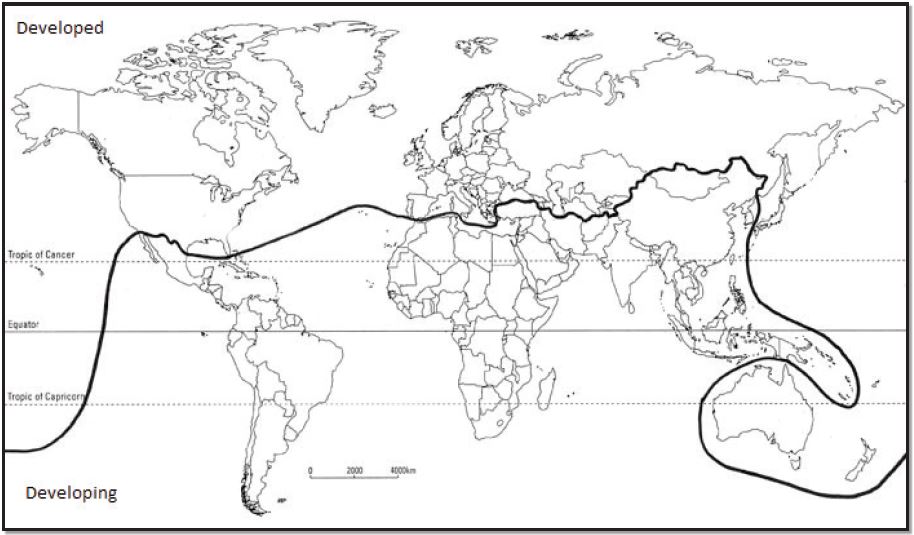77 9.1 DEVELOPMENT AND GEOGRAPHY: AN INTRODUCTION
If you could choose anywhere on the planet, where would you like to live? Would you choose a place with mountains or with beaches? A place with high taxes or few regulations? Do you love your community/state/country? Could you make more money somewhere else or might you be happier with warmer/colder weather? Do you think that you are able to realize your full personal potential in the place where you live now? Why or why not? Your answers might vary greatly from other people around the world based upon what language you speak, your religious preferences, your cultural framework, and your own persona values. Nonetheless, there are certain indicators that geographers can use to categorize places according to how developed they are in terms of technology, infrastructure, wealth, and opportunity. As you might guess, the differences between places can be quite stark, but it’s important to understand the dynamics and geography of the patterns and processes associated with income, well-being, and opportunity. This chapter explains how those distinctions are made and how they vary across time and place using the concept of development (the processes related to improving people’s lives through access to resources, technology, education, wealth, opportunity, and choice).
Which places on earth are the most developed? There is no simple answer to this question. San Francisco is often voted as the most beautiful city in the U.S. but the cost of living makes this place unaffordable for all but the wealthiest of residents. Ancient cities like Jerusalem, Athens, and Baghdad contain amazing architecture and the roots of western civilization, but streets also tend to be narrow and housing crowded. China has experienced the fastest economic growth of any other country in the past 30 years, but it is accompanied by catastrophic levels of air pollution, poor working conditions, and severe limits on personal liberty. Within the United States, people in Colorado tend to be the healthiest while those in Utah have the largest houses and people in Texas are the most loyal to their home state. There are multiple ways to measure development, and geographers spend a great deal of time and effort studying, measuring, and quantifying the differences and commonalities.
A few general truths about development and wealth in our 21st century world can simplify the complexity:
- The world continues to be divided into the Global North and Global South by the Brandt Line (See Figure 9.1). Levels of wealth, well- being, access to technology, and health tend to be higher in northern countries than in southern ones. The line is problematic because it over-generalizes, but it remains a meaningful starting point to understanding development from a global scale.
- The majority of people living in the 21st century have a higher standard of living, earn more money, are healthier, and live longer than was the case for people 50 years ago.
- In spite of #2, the wealth disparity between those at the bottom and those at the top remains greater than ever before. According to Credit Suisse’s global wealth report, the globe’s richest 1% (of people) control more than half of the world’s wealth, up from 42.5% in 2008.

Figure 9.1 | The Global North as defined by the Brandt Line in 1980
Author | User “Jovan.gec”
Source | Wikimedia Commons
License | CC BY SA 4.0
